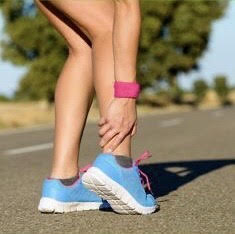Given the current social distancing measures and restrictions on the use of gyms, exercise classes and organised sport, we have noticed an increase in people exercising outdoors to keep fit and pass the time, including long walks and running. On the other hand, we are aware that some of you are training much less frequently or vigorously and plan to return to exercise once restrictions are lifted. With this sudden increase in activity or change in load comes the associated increased risk of injury.
Have you ever felt pain at the back of the ankle?

An Achilles tendinopathy is an over-use injury. It tends to occur as a reaction to increased demand on the Achilles tendon, beyond its usual capabilities. Those with an Achilles tendinopathy will typically report pain and stiffness at the back of the heel, particularly first thing in the morning or when first starting out on a walk or jog.
The Achilles tendon is found at the back of your ankle. It is a thick, fibrous tissue that attaches your calf muscle to your heel bone. The function of the tendon is to transmit the forces of the calf muscle to your foot, allowing you to do movements such as point your toes, run, and jump.
Common causes of Achilles tendinopathy include:
- Over-training?or unaccustomed use – “too much too soon”
- Excessive intensity or distance increase
- Change in training surface?– e.g. grass to bitumen
- Lack of training variation
- Poorly supportive footwear.

The hallmark sign of an Achilles tendinopathy is an increase in pain at the back of your heel when load is placed through the tendon after a relative period of immobility. This can include first thing in the morning, stepping out of the car after a long drive, or at the start of running/jumping activities. It can warm up with activity and feel better with minimal pain only to feel worse after activity.
Treating an Achilles tendinopathy is relatively simple, but you must be patient and strict with your regime given to you by your physiotherapist. The following are the most common methods of treating an Achilles tendinopathy.
- Modification of pain producing activities and training loads.
- Strengthening, balance and some stretching exercises. This needs to be prescribed by a physiotherapist.
- Ice (after exercise; 20 mins on/2 hours off) if the tendon has become irritated.
- Correction of biomechanical abnormalities and attention to footwear.
- Anti-inflammatory medication.
It is important to visit your physiotherapist should you have any pain of musculoskeletal origin so that a proper program can be implemented and structured to you.
